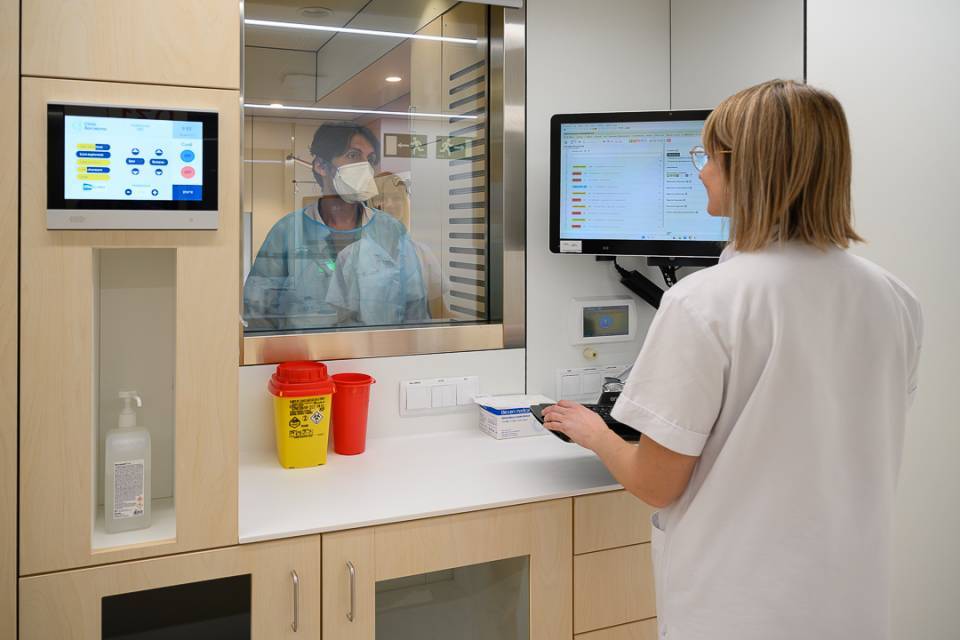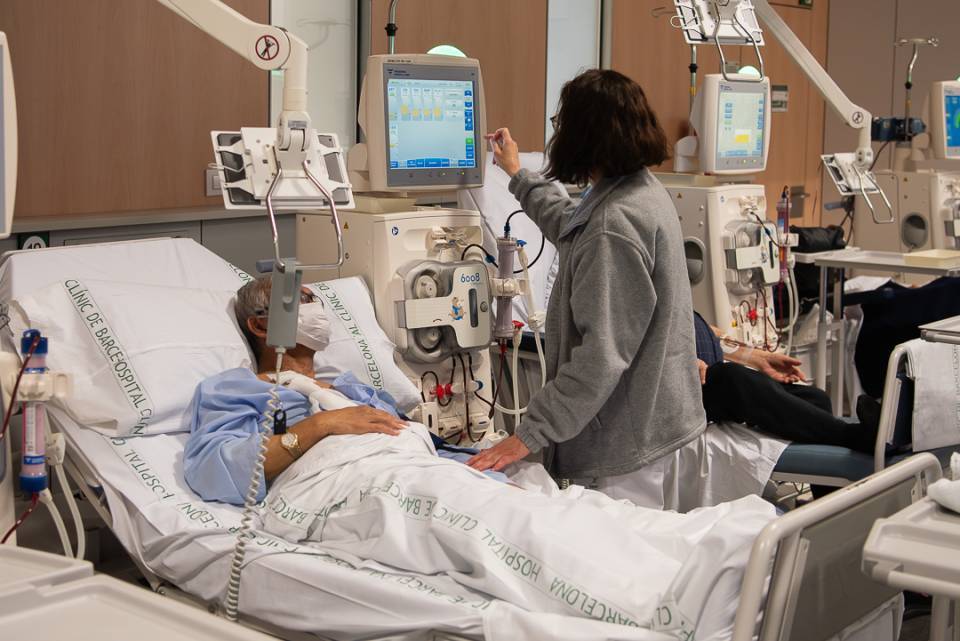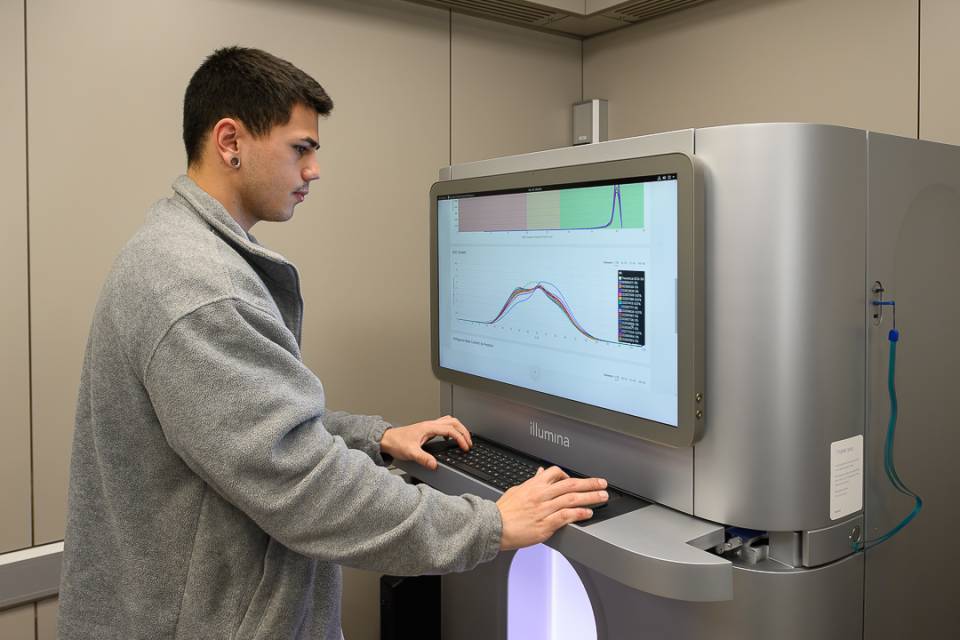The Hospital Clínic Barcelona has opened a new infectious diseases ward as a result of the experience during the COVID-19 pandemic, and in response to the lessons learned over these years. Thus, on the one hand, work has been carried out to improve the overall experience of patients admitted under isolation conditions. This is a situation that makes patients very anxious due to having less contact with healthcare staff and family members, and which has a negative influence on health indicators. On the other hand, it facilitates the work of healthcare staff, through hospital automation, guaranteeing their safety.
The ward is made up of 16 beds—8 single beds at the entrance and 8 double beds at the end of the unit—which can in turn be closed off to isolate 4 to 8 patients if necessary for high-level isolation, as in the case of an Ebola virus infection.
The head of the Infectious Diseases Service, Dr Alex Soriano, the ward coordinator, Roger Llobet, and the head of Infrastructures, Ana Sánchez, all agree that, “after the experience with COVID-19, the design of the ward fulfils three basic objectives: it guarantees proximity between patients, the healthcare staff and the family; it improves safety; and facilitates the work of the professionals caring for isolated patients”.
Functional wall and incorporation of hospital automation
To achieve these objectives, work has been carried out in two areas:
Functional wall that allows the room to be opened to the outside, whilst maintaining the patient's privacy
This concept means that all the rooms have a wall with a frosted glass panel that can turn transparent or opaque, as required. This allows visual and auditory contact with the patient through a two-way communication system, without the need to enter the room.
As Dr Soriano explained, “this allows the number of times the staff members have direct visual contact with the patient to increase, as well as the interaction with their relatives. In this way, contact with the patient is facilitated, they feel reassured and their anxiety is reduced”.
This functional wall also has advantages for the healthcare staff working on the ward, with the incorporation of an individual workstation for each room. Each functional wall has a touchscreen computer, a platform and drawers with all the material needed to prepare the medication for each patient.
Dr Soriano pointed out that this feature "reduces the administrative errors inherent to shared workstations for different patients”. And he added, “the fact that it incorporates a material exchanger inside the room allows healthcare staff to enter with their hands free, thereby facilitating hand hygiene, which is so important in reducing the transmission of resistant microorganisms”.
Incorporation of hospital automation
This system allows the lighting to be adjusted automatically as required: for reading, examinations, night-time or ambient lighting; or to raise and lower blinds and shutters; as well as alerting healthcare staff via a light code system to situations that require urgent action.
Mr Llobet said that “this regulation allows the patient to maintain their circadian rhythm during their hospital stay, respecting their night-time rest, while at the same time providing the light needed by the professionals to be able to carry out their work”.
This installation was made possible thanks to the legacy from Mr Javier Moreno Chaparro and the joint work by the Infrastructure Management and the Infectious Diseases Service at the Hospital Clínic.
You can see the full photo album of the opening and the new room here.




